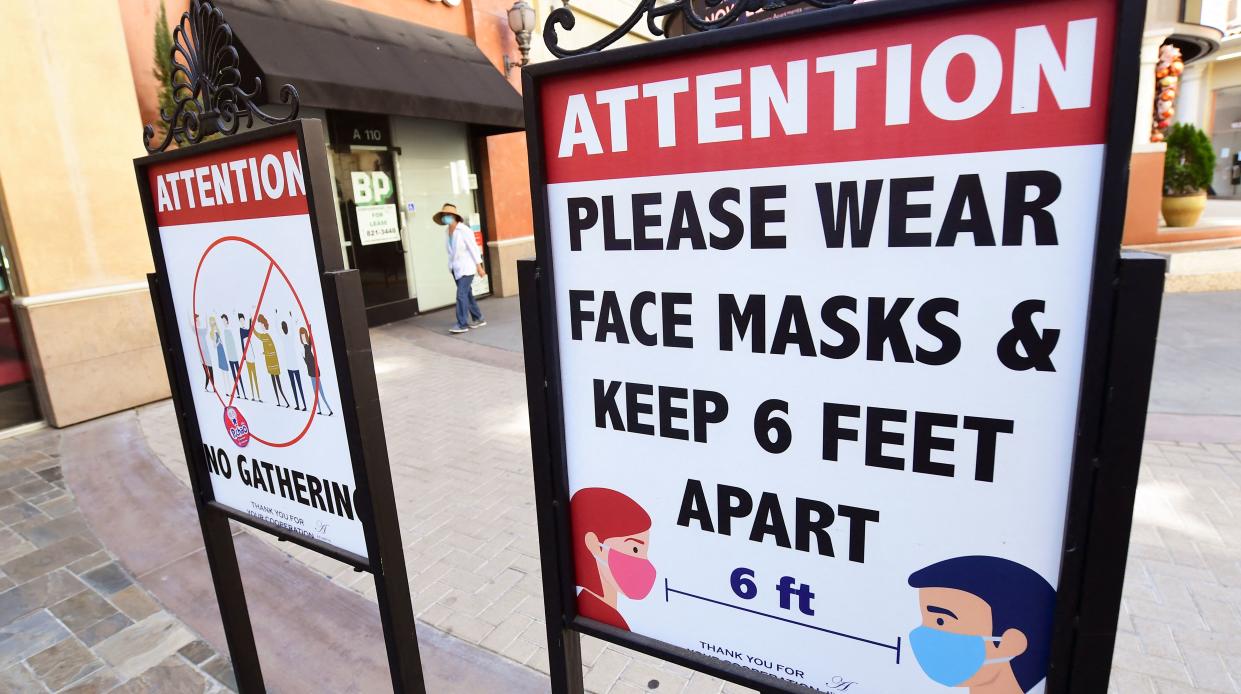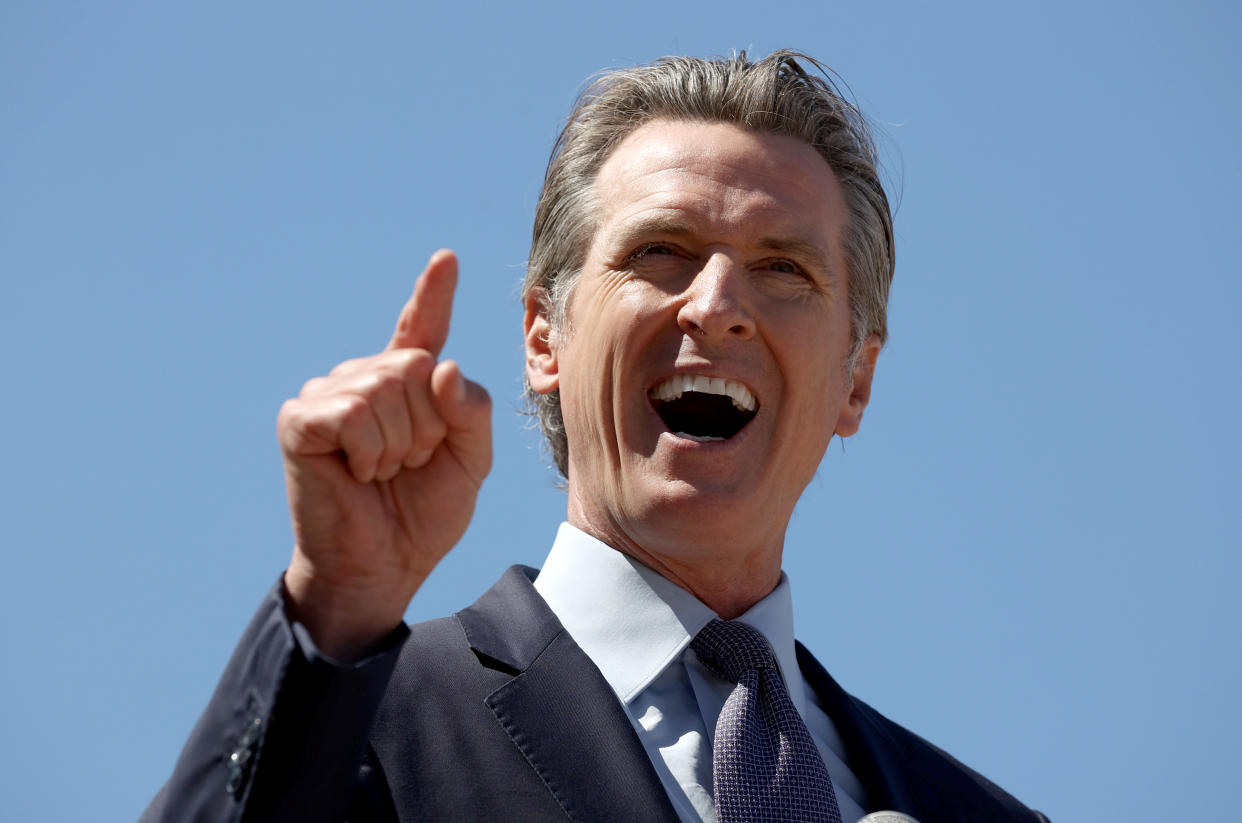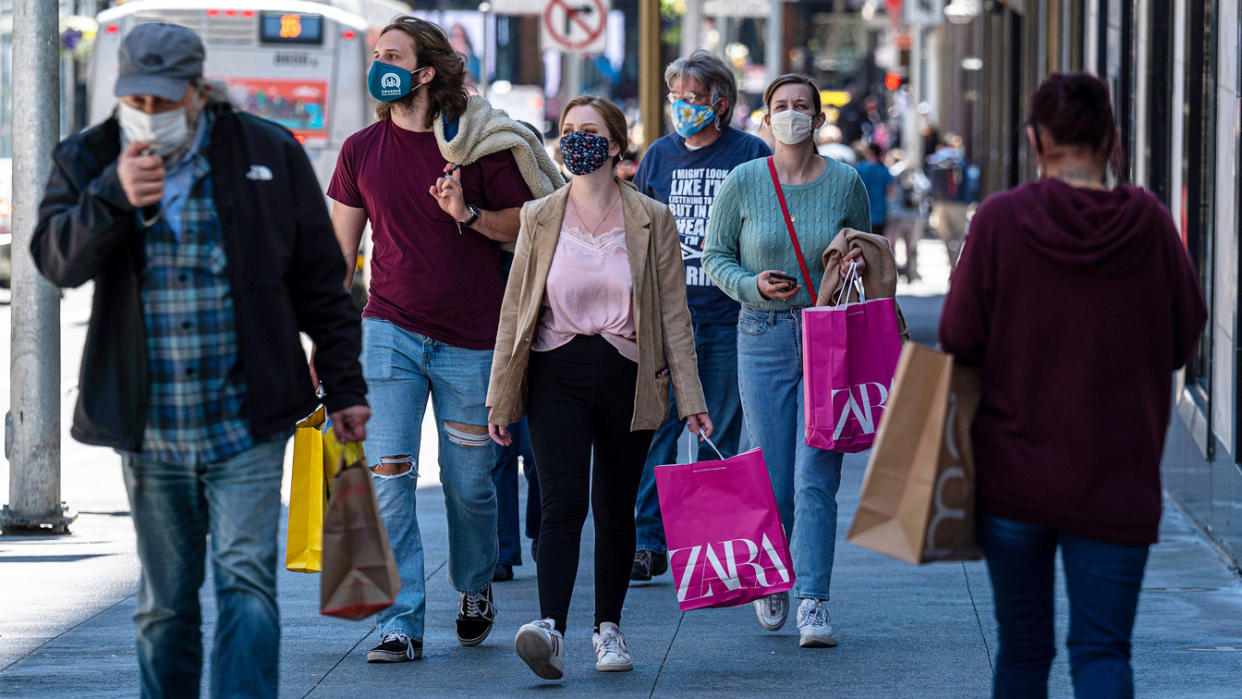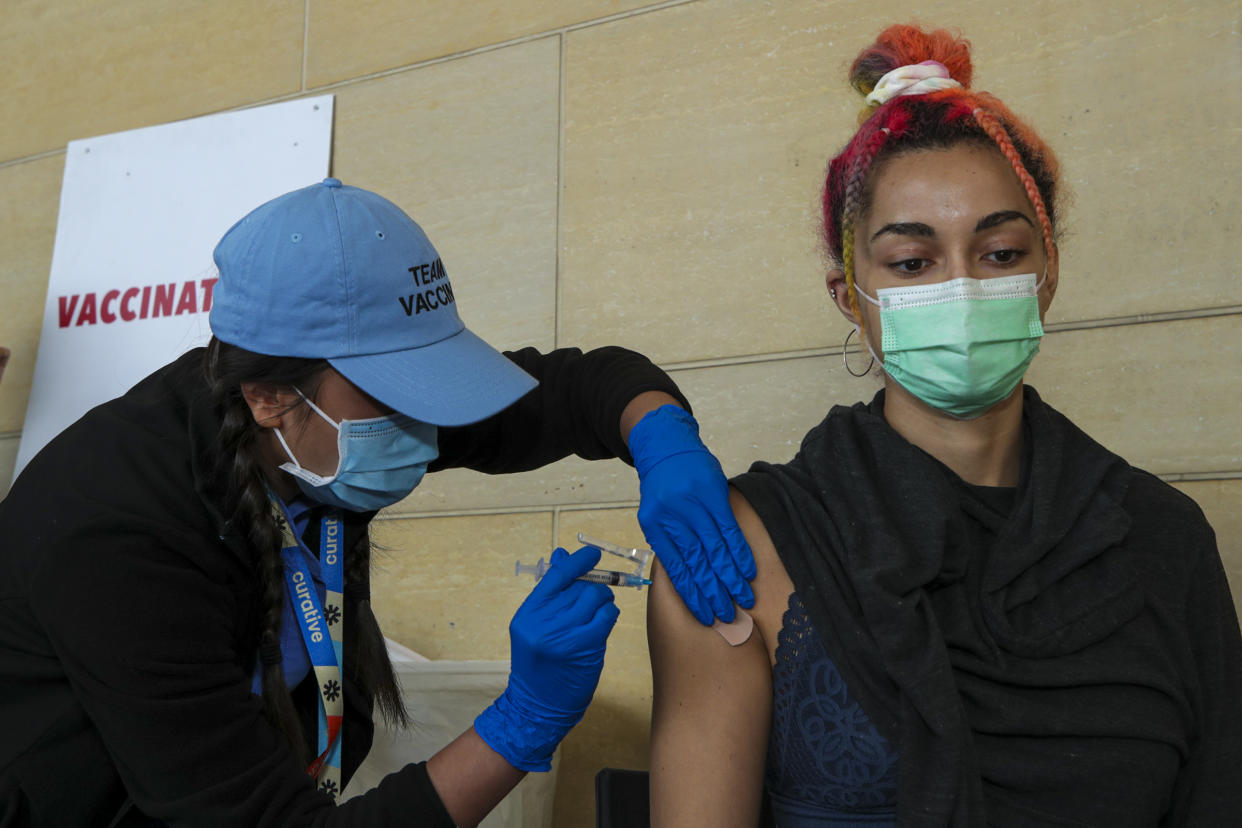California finally lifts its last big COVID restrictions. Did the state play it too safe?
LOS ANGELES — When California finally lifted its mask mandate Tuesday — it had been, until then, the last state in America to require residents to cover their faces indoors, regardless of vaccination status — the shift felt more like an evolution than a revolution.
In the state’s largest city, life looked pretty much the same as it did last Tuesday (and the Tuesday before that). Locals walked their dogs at sunrise; some wore N95s, some went maskless. Delivery drivers dropped packages on doorsteps, often with their mouths — but not their noses — covered by cloth. At one popular local pastry and coffee shop, pre-June-15 “safety protocols” remained in effect: no indoor dining, masks still “required at all times while inside the bakery.” Across the street, customers browsed the shelves at a beloved used-book store — some masked, some not.

This mellow, you-can-go-your-own-way response to the official removal of pandemic restrictions stood in stark contrast to months of right-wing media distortions portraying California as a draconian police state where “lockdown” never ended.
Yes, California may have been the first state to lock down at the start of the pandemic — but it hasn’t been locked down in any real sense since May 2020. Shops have been open. Outdoor dining opened last summer, then closed during America’s holiday surge, then reopened in January 2021. Indoor dining has been open since March. Indoor bars have been open since May; so have amusement parks.
What changed on June 15 is that more Californians can now frequent these establishments at the same time — farewell, capacity limits — and vaccinated patrons will no longer be required by the government to keep their masks on. (Unvaccinated residents are still supposed to cover their faces indoors.)
In other words, California has pursued a more measured approach to reopening than conservative critics would have it — one that sought to balance the need to get businesses back on their feet after last spring’s global collapse while also recognizing that the most effective way to lure customers and workers out of hibernation is by ensuring they feel safe from the virus itself.
And now state leaders and experts expect this approach to pay off.
“It is because of our health-first focus that this state is not just poised to recover,” Democratic Gov. Gavin Newsom said Monday. “It is poised to come roaring back.”

The strategy has already paid off in terms of public health. Today, California is averaging fewer than 1,000 new daily COVID cases for the first time since April 2020, down 98 percent from the state’s winter peak. In comparison, Florida — a fellow large warm-weather state that opened indoor bars and restaurants at full capacity over the winter and effectively banned mask mandates in May — is averaging nearly twice as many daily cases. For California, this translates into a per capita average of 2 cases for every 100,000 residents, one of the lowest rates in the nation; Florida’s case rate is four times as high. Similarly, the current per capita COVID hospitalization and death rates in California are just a third of their corresponding rates in Florida.
Higher vaccination rates are also likely to leave California better prepared than Florida to weather a future spread of the dangerous Delta variant. A full 92 percent of California seniors have received at least one vaccine dose, as have 72 percent of adults and 59 percent of the state’s total population. In Florida, each of these numbers is lower: 89 percent, 61 percent and 51 percent, respectively. Soon private businesses will be able to require Californians to show their vaccine cards — digital or physical — to prove they don’t need a mask.
But while the public health benefits of California’s more gradual approach to reopening are clear, the economic picture is more muddled — at least so far.

Business trends are encouraging. According to a new report from economists at the University of California, Los Angeles, for instance, California’s gross domestic product, or GDP — the standard measure of economic growth — actually shrank by less than Florida's or Texas’s in 2020.
“California’s economy outperformed those other states’ because of [our] health policies,” Newsom said Monday. “Florida actually had worse economic outcomes over the last year than the state of California.”
And it wasn’t just California. When the authors of the UCLA report examined all 24 U.S. states with more than 5 million residents, they found that the ones with more “stringent” COVID rules tended to have “both better health outcomes as measured by infection rates and better economic outcomes as measured by GDP growth.”
In part as a result, Sacramento now boasts a record $80 billion surplus, and Newsom last month was able to announce the biggest state tax rebate in U.S. history.
As Bloomberg’s Matthew A. Winkler recently explained, “The Golden State has no peers among developed economies for expanding GDP, creating jobs, raising household income, manufacturing growth, investment in innovation, producing clean energy and unprecedented wealth through its stocks and bonds.”
Yet unfortunately for Newsom, these aren’t the only economic indicators worth considering. Unemployment is currently higher in California (8.3 percent in April, the last month with available data) than in Florida (4.8 percent) — a point that Florida Gov. Ron DeSantis, a Republican, never tires of making. DeSantis’s argument is that it was well worth the public health trade-off to let all indoor businesses operate at full capacity over the winter because it’s the reason fewer Floridians are unemployed today.
Regardless of what DeSantis says, that claim doesn’t really stand up to scrutiny. By the time he lifted capacity limits last September, Florida’s unemployment had already fallen by half from its spring peak of 14.2 percent to 7.2 percent. Since then, it has fallen only another 2.4 percentage points, and it actually ticked up again in April. So given that most of Florida’s job gains came during a period — last spring and summer — when the Sunshine State and the Golden State were actually reopening at a similar pace, it’s likely that structural factors played a bigger role than COVID restrictions. The two states didn’t really diverge until the fall.

Still, it’s true that California’s job gains have been slower than Florida’s; that delayed school reopenings driven by teachers' unions didn't help; and that Newsom’s tighter approach over the holidays interrupted some of the state's job progress. Epidemiologists say the pause was a rational price to pay when as many as 700 Californians were dying of COVID-19 every day — especially with expanded federal unemployment benefits serving to cushion the economic blow. But the question now is whether California can catch up.
Early indicators are positive. Last week, Californians filed the fewest unemployment claims since March 7, 2020, right before lockdown. The total number of jobless claims last week (53,000) was down 26 percent from the week before. New employment numbers released Friday show the state added more than 100,000 jobs for the third month in a row; in April, that was enough to account for 38 percent of all jobs added nationwide. And while “there are a disproportionate number of low-income households and small businesses who have been left behind in the demonstrable ‘better economic outcomes’ the state has experienced,” according to the UCLA report, its authors also forecast that “the California recovery [will] ultimately be ... faster than” that of the U.S. as a whole — and that “many of [the] lost jobs” concentrated in “sectors with a high degree of human contact” will “return” as “the pandemic recedes and business restrictions are eased.”
Ultimately, this is California’s big bet: that a more cautious winter, a few additional months of masking up indoors and a wider mass vaccination drive have all but eliminated the risk of future surges — and set the stage for a stronger recovery as a result.

Californians seem to favor that approach. After toying this winter with the idea of recalling Newsom, a full 57 percent now say they would vote to keep him in office, while just 40 percent say the opposite. Even more (64 percent) approve of how Newsom has handled the pandemic.
“We don’t want fits and starts,” the governor said Monday during an Instagram Live appearance with the singer John Legend. “We want this damn chapter of our lives over, done for, 100 percent — never to return again.”
We’ll find out in the months ahead whether Newsom succeeded — and whether California’s sacrifices were worth it.
____
Read more from Yahoo News:

